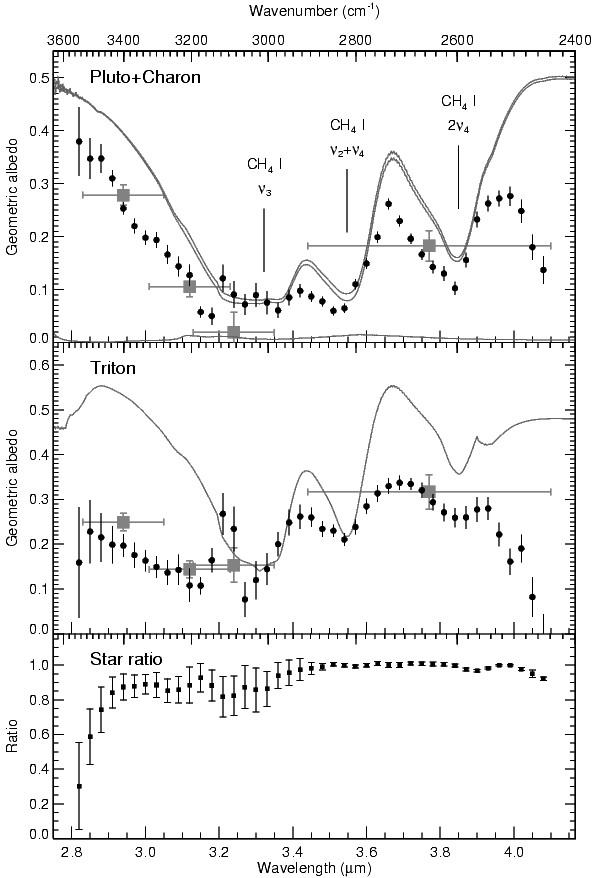
Spectroscopy of Pluto and Triton at 3-4 microns: Possible evidence for wide distribution of non-volatile solids
Published in 2002: Astron. J. 124, 2273-2278.
W.M. Grundy(1,2), M.W. Buie(1,2), and J.R. Spencer(1,3)
(1) Lowell Observatory, Flagstaff Arizona.
(2) Visiting observer at NASA's IRTF, Mauna Kea, Hawai'i.
(3) Now at Southwest Research Institute, Boulder Colorado.
Abstract
We present new albedo spectra of Triton and Pluto+Charon covering the 2.8 to 4.1 micron wavelength range at a spectral resolution of ~60. The new data reveal three strong CH4 ice absorption bands, as well as additional absorption around 2.9 and 4.1 micron in spectra of both bodies, which we tentatively attribute to widely distributed H2O ice, along with CO2 and/or SO2 ices. Since these species are non-volatile at typical Triton and Pluto surface temperatures, widespread distribution of any of them in volatile-rich regions challenges current understanding of the surfaces of Pluto and Triton, in which more volatile, mobile ices are thought to be segregated from less volatile species.
Figure 1

Fig. 1. Grand average spectra of Pluto+Charon and Triton (black circles), compared with Spencer et al. 1990 data (grey squares), recent theoretical models (grey curves), and the wavelengths of three CH4 I bands. The models were computed from parameters presented by Douté et al. (1999) for Pluto, Buie and Grundy (2000) for Charon, and Quirico et al. (1999) for Triton. The separate contributions of Pluto and Charon models are shown, as well as their sum. Charon's contribution is minimal at these wavelengths. In the bottom panel, a ratio between solar analog stars observed at 1.84 and 1.15 airmasses illustrates telluric transmission behavior.